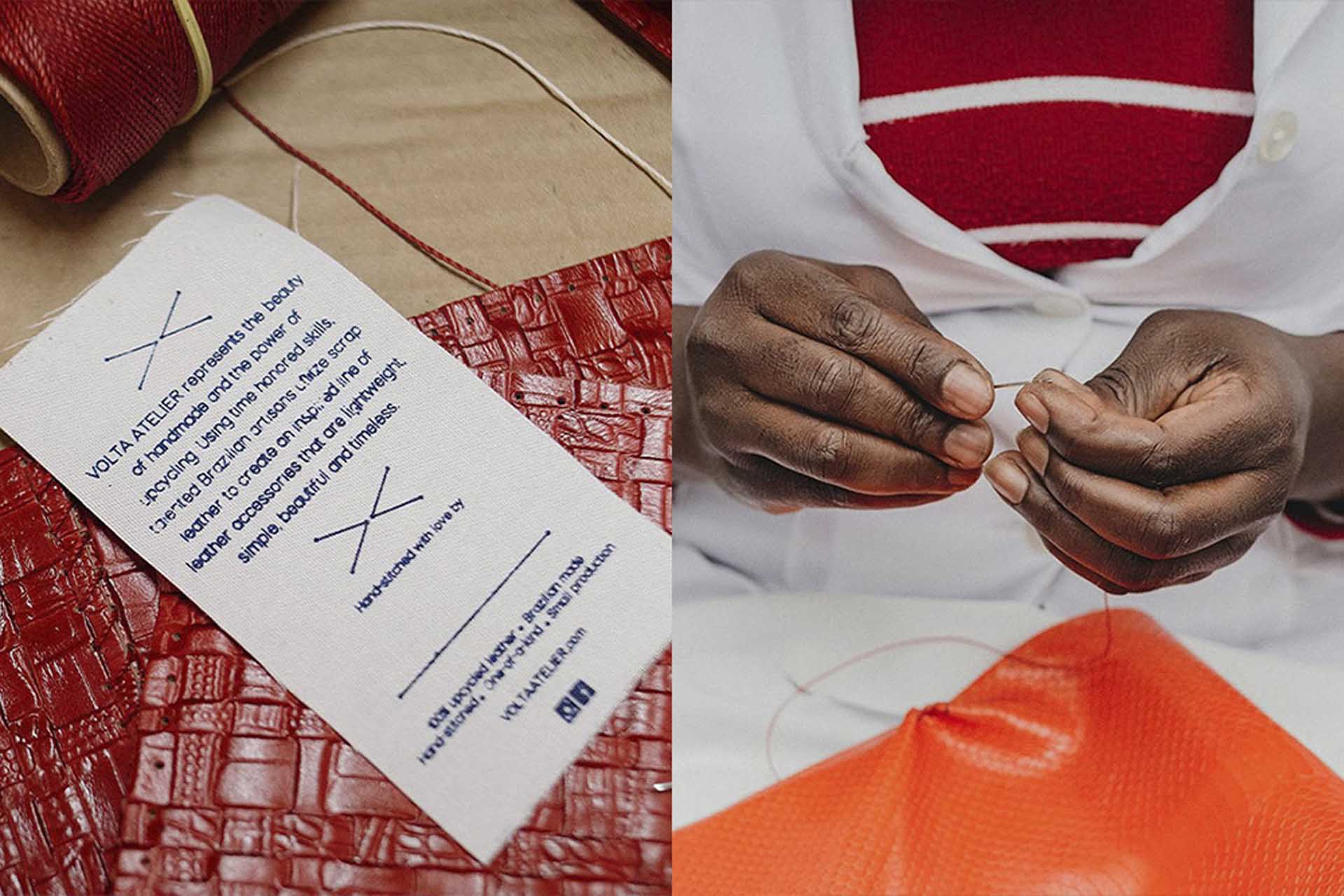When you speak about VOLTA ATELIER: sustainability, social justice, refugees, social vulnerability, leather scraps, leather handbags, NGO are the incredible mix of words that come to mind.
They work in close collaboration with NGO’s (Non-governmental organizations. NGO’s take up and execute projects to promote welfare of the community they work with. As not-for-profit bodies they do not have any commercial interest). The atelier shows that beautifully made leather bags can have a huge positive social impact, from materials to the chosen team.
Each creation is hand-stitched by artisan women in social vulnerability, such as refugees from Haiti living in South Brazil, victims of domestic violence or former inmates. The materials used are also one of a kind: transforming 100% scrap leather into designs to covet.
What an amazing brand! Read the interview with Fernanda, founder of Volta Atelier.

How did VOLTA firstly start?
Having worked in the leather accessories industry, I observed the environmental problem caused by the wasted material generated from production, leather among them. At the same time, I was already developing in Brasil projects for the use of artisanal work in accessories within a higher production scale. Working as a trend forecaster I had the understanding that there was room for purpose-driven brands. So, the decision of making accessories using 100% of upcycled leather and artisanal production was a natural consequence of my previous activities.

Do you guys believe that “Waste Is an Error of Design”. What does that mean to you?
The landfill problems we’re experiencing now are in great part a result of a culture of planned obsolescence, which was a design solution at its time. Once Design is concerned with all aspects of a product, waste management should be one of them, not only for the patternmaking creation or for the waste generated during production but also its after-use. The design should not omit this responsibility.
How important is your team during the entire process?
As a brand that produces artisanal products, we rely 100% on our team. Their importance is not only on the work they do. The artisans bring their journey to the brand. These Haitian women, for instance, are an inspiration for us. During their training, we learned about unimaginable difficulties they went through, forced by their circumstances to move to a foreign country, to communicate in a new language. We want our consumers to become part of this, and to be inspired by the story behind each item. That is why each product comes with a tag signed by the artisan who had hand-stitched it.
What is the connection u see between sustainability & working with socially vulnerable woman?
Sustainability and social justice walk side by side. From the seventeen United Nations’ Sustainable Development Goals, at least eight can be considered social goals, as the elimination of poverty, gender equality, social work, and so on. So, for us, sustainability is inextricable from social justice.
How does the reuse of leather happen?
One of the best parts of reusing leather is exclusivity: almost all our bags are one-of-a-kind. This also comes with some constraints. As we are not ordering the production of the raw material, there’s an inverted logic to plan our production. Our company cannot simply decide what to produce. In the beginning, our available material is used to decide what products can be made. I would dare to say it’s a completely new way of thinking production.

And how do you choose the perfect material?
We carefully select our leather scraps from tanneries and factories, after production or a collection. Having worked for this industry enables me to look at different sources to find what fits best for us. In our process, it is crucial to have a good assortment of colors, prints and embossing patterns. Brazilian leather is one of the best in the world but also using it makes sense for us from a logistical standpoint.
What is the big difference between hand-made goods from other types of production?
We believe the big difference is in the connection. There is a connection between the artisans and the items being made. The artisans are incorporating their time, work, attention to detail, and their heritage into the product. When this connection is perceived by the consumer, the product becomes meaningful.
New year, bigger goals — What are the ultimate goals for Volta Atelier?
Apart from business expansion while making a meaningful impact, we want to increase our product mix with items combining other upcycled materials and artisanal techniques. We also want to build collaborations and partnerships with like-minded brands, artists and NGOs.
This interview was first published on Metcha.com